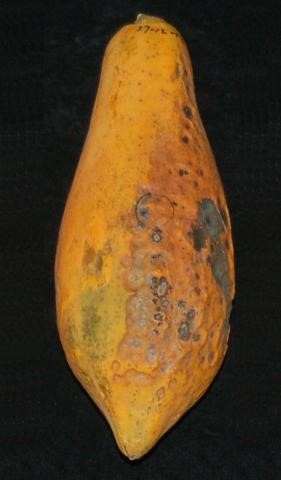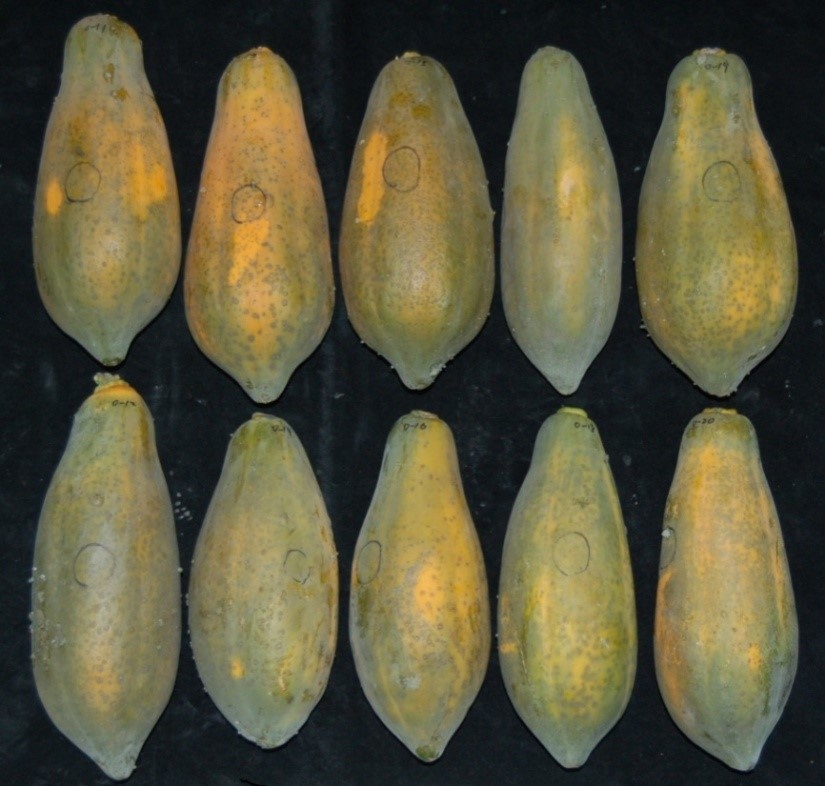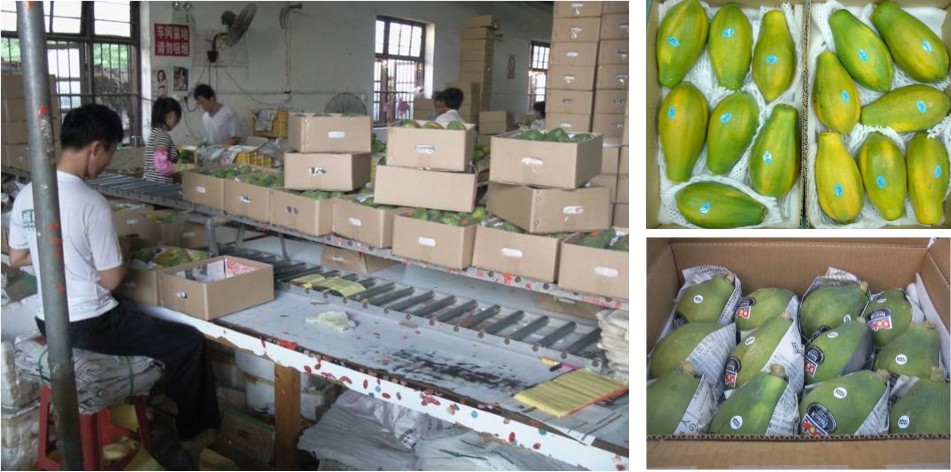Papaya Loss Reduction
In postharvest, there are several steps of processing started from orchards till consumers hand which can cause postharvest losses: A: harvest loss (4-12%): improper maturity, vessel design error, incorrect harvesting way, improper protection during harvest. B: packaging loss (5-15%): improper sorting, cleaning, and packaging way, poor pre-cooling way and sanitary. C: tranportation loss (2-8%): careless handling, improper storage condition, mixing with other products and transportation delay. D: consumers (1-5%): improper storage, time and way to eat the product.
This aritcles will use ‘TN 2’ papaya fruits postharvest as example. This article will discuss the main factors that caused papaya harvest loss and the product loss during each steps of export. In additon, this article also aggreagte various technique that is used during export process.
- The main factors that caused papaya postharvest loss are the mechanical damage and pathogens such as Anthracnose (Colletrotrichum gloeosporioides)and Stem-end rots (Ascochyta caricae-papayae、Phomopsis caricae-papayae、Phytophthora nicotiana var parasitica.


Papaya fruit rot
(Anthracnose Colletotrichum gloeosporioidesStem-end rots (Botryodiplodia theobromae Pat.)Penzig)
- Quarantine methods for exporting to Japan is vapour heat treatment whereas the fruits is heated till the fruits cavity reach 430C with 40-60% relative humidity as first step. Second, increase the RH to 100% and heated till the fruit cavity reach 47.20C then reduce the temperature to room condition. Vapour heat treatment can reduce the fruit quality. Therefore, fruit maturity, proper transportation and cold storage are important to maintain fruit quality and increase growers’ income.

Vapor heat injury - During the observation of papaya quality in whole year showed that July to September are the best harvest seasons. In December to May, the fruits have skin freckle symptoms, abnormal ripening and easy to get heat injury during heat treatment.

Quality survey of papaya in whole year
Hot water treatment is the suitable methods to reduce fruit deterioration. Hot water treatment can be divided into two types:
- Batch immersion:
One batch of papaya is immersed at 46-500C for 20 minutes. The water circulation should be noted during immersion. - Continuous immersion:
The hot water facilities is designed together with packaging facilities and the immersion time is about 3 minutes at 540C. - Note:
During hot treatment, it is important to inspect the temperature and immersion time. If the temperature is too high of immersion time is too long can cause abnormal ripening, heat injury and enhance deterioration.
Hot water treatment - Suitable cold storage temperature after quarantine:
Papaya is belong to low temperature sensitive fruits. Most of the cultivars stored at 10-150C can cause chilling injury. For‘TN 2’papaya cultivar, it can be stored at 120C for 14 - 24 days after quarantine. Papaya can be store at lower temperature when the maturity stage is higher. - Suitable temperature for long distance transport:
‘TN 2’papaya ripen at 350C for 24 hr is recommended then stored at 10C for 28 days and has 7 days on shelves at 100C.
Pick out
Grading and Package
Long distance transport
Dr. Ching-Chang Shiesh, National Chung Hsing University, Chinese Taipei
